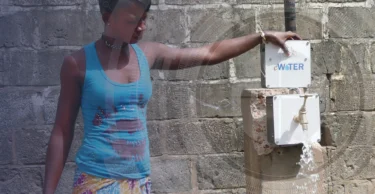
Granting Access to 24/7 Clean Water in Africa.
Find out how eWATERPay is changing lives with IoT.

Find out how eWATERPay is changing lives with IoT.
A startling 780 million people worldwide do not have access to an improved water source according to the Centres for Disease Control and Prevention. Water systems are continuously installed but 65 per cent break within the first two years, an issue which adds to the mounting problem in the most remote and disadvantaged communities.
eWATER is determined to solve the water crisis in Sub-Saharan Africa. By using technology and local operational excellence, it is providing an affordable, accessible, and sustainable solution across Africa.
Water, Sanitation and Hygiene advisors are all too aware that the traditional model relies too heavily on unreliable water committees to collect user fees and carry out maintenance.
As a result, often generously donated solar pumps and filtration systems can be left broken for years, particularly in war-torn regions where a charity has withdrawn, and the infrastructure slowly fails to deliver.
For the world’s poorest people, a sustainable solution must provide easy and affordable payment per use and in-country maintenance of the water supply, while creating local employment opportunities.
Anyone can present an eWATERPay NFC tag to use a tap. Once it has been read, the valve will open allowing the flow of clean drinking water.
eWATERPay’s technology works in most rural areas, even those with poor data connectivity. Everyone can buy credit for water, everytime and everywhere.
Real-time information on functionality, flow rates and sales can be used to detect when tap faults arise and ensure they’re repaired quickly.
Take a deeper dive into eWaterPay’s IoT journey. Find out how we helped them overcome hurdles that might stall your IoT project, and see how we can help your business succeed with IoT.
Read case studyeWATERPay provides a solution by using mobile technology for the transparent and accountable collection of user fees to ensure sustainable maintenance. To achieve this eWATERPay fully integrates three technologies to manage the provision of clean, low-cost water, which is accessible 24/7: mobile money, IoT, near field communication (NFC).
Its core challenge was achieving a highly available and reliable connectivity solution to scale its water solution to the most rural communities in Africa.
Connectivity is core to eWATERPay’s business model, without it the taps could not operate. With grant support from the GSMA Mobile for Development Utilities Innovation Fund, eWATERPay turned to Eseye to deliver near 100%, highly secure and resilient cellular connectivity.

eWATERPay leveraged our IoT device design consultancy service to develop a robust IoT solution. Within weeks, we customised our HERA communication node, rapidly developed a prototype, performed a detailed proof of concept, and deployed units for field trials.

Payments are securely made using an eWATER tag and dispensers communicate seamlessly with eWATER’s payments software, providing real-time payments and water usage data. More than 367,000 people have used eWATER’s taps and dispensed over 1 billion litres of water.

Developing countries spend over $15 billion a year on water infrastructure. 40 percent of systems typically fail after two years. Intelligent predictive maintenance is solving this problem at the root by ensuring the infrastructure is invested in, maintained, and repaired.
With 787 taps delivering over 1,261,000 liters of water across Sub-Sahara Africa, we have helped 239,457 people access clean low-cost water.

Find out how we can support your IoT project